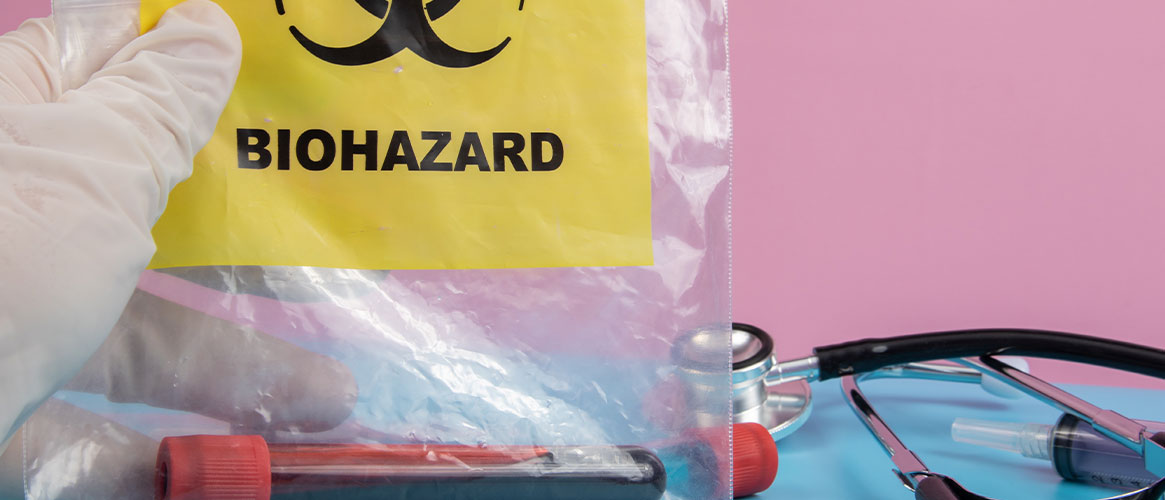Bloodborne pathogens (BBP) can cause disease when transferred from an infected person to another person through blood or other infected body fluids. The most common BBPs are hepatitis B virus, hepatitis C virus, and human immunodeficiency virus. BBPs can cause serious infections and long-term health problems.
Who is at risk?
Workers that are at risk of exposures to BBPs include:
- Doctors, nurses, certified nursing assistants, dentists, lab workers
- Paramedics, emergency medical technicians, firefighters
- Law enforcement officers, correctional facility staff, and security guards
- Mortuary workers.
- Housekeeping, janitorial, and maintenance staff at any facility where the workers can be exposed to potentially infectious blood or other bodily fluids
- Tattoo artists and workers who do piercing
- Hairdressers, barbers, and massage therapists
- Bus, taxi, and rideshare drivers
Worker exposure risks to injury and illness
Healthcare workers are most commonly exposed to BBPs by needlesticks and other sharps-related injuries. Non-healthcare workers can be exposed by direct contact with blood and other infected body fluids through breaks in the skin such as cuts, scrapes, rashes, burns, sharps punctures, or bites by infected individuals. Also, BBPs can enter the body by contact with mucous membranes like the eyes, nose, and mouth.
How to control exposure to bloodborne pathogens
It starts with your exposure control plan to reduce worker exposures to BBPs. This plan is required by Cal/OSHA and must include details about the measures you will take to protect your employees. You can use Cal/OSHA’s fillable Exposure Control Plan for Bloodborne Pathogens template to customize an exposure control plan for your workplace. The plan must include the required elements outlined in the Cal/OSHA bloodborne pathogens regulation, such as engineering controls, personal protective equipment (PPE), training, medical surveillance, vaccinations, and safe handling of biohazard waste.
Universal precautions
The Centers for Disease Control guidelines for universal precautions help protect workers in the healthcare industry from BBPs. These guidelines treat all human blood and certain body fluids as potentially infectious on the assumption that they can transmit disease. Universal precautions should be followed by workers in all industries, and include hand hygiene, personal protective equipment, and sharps safety.
